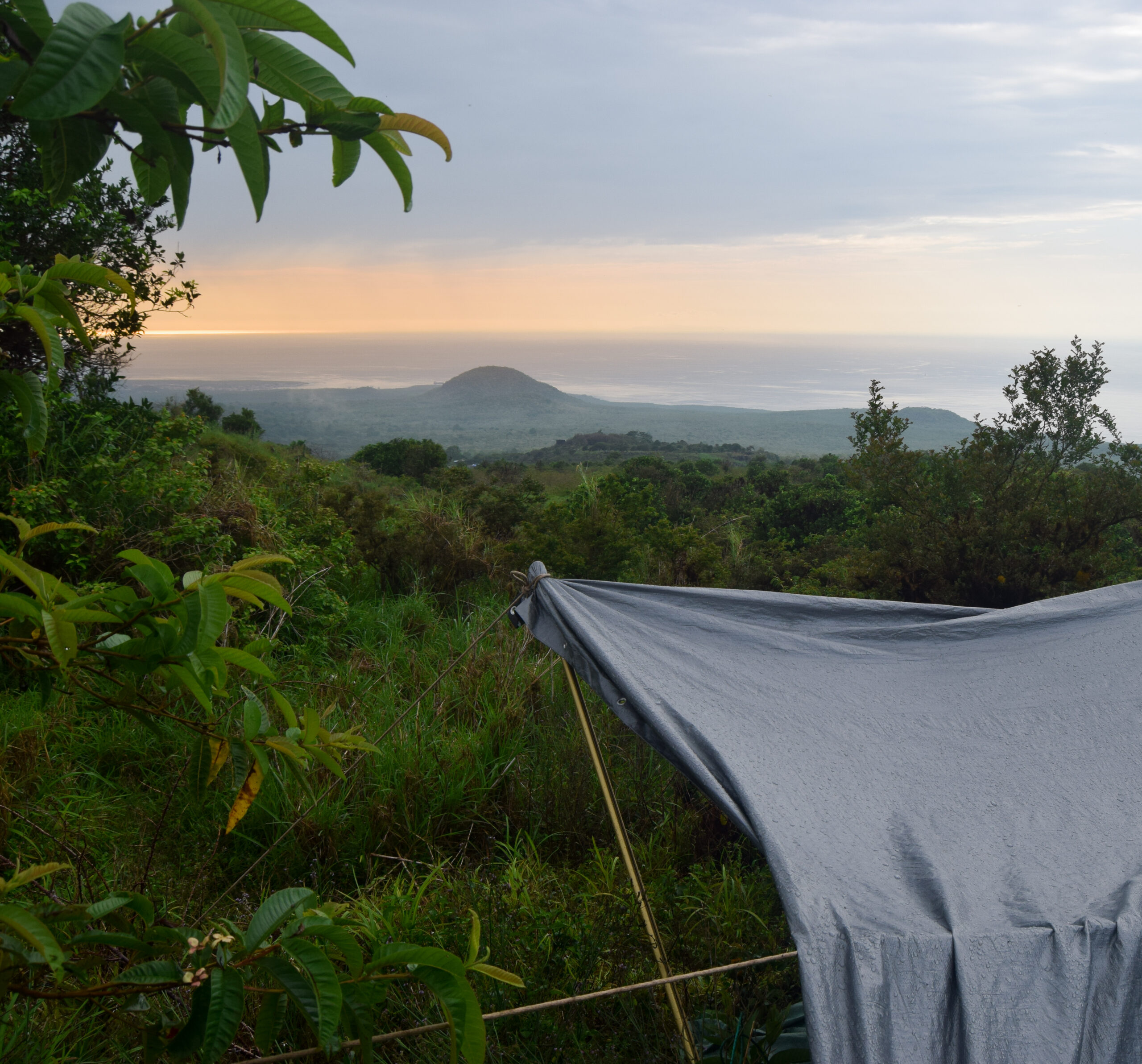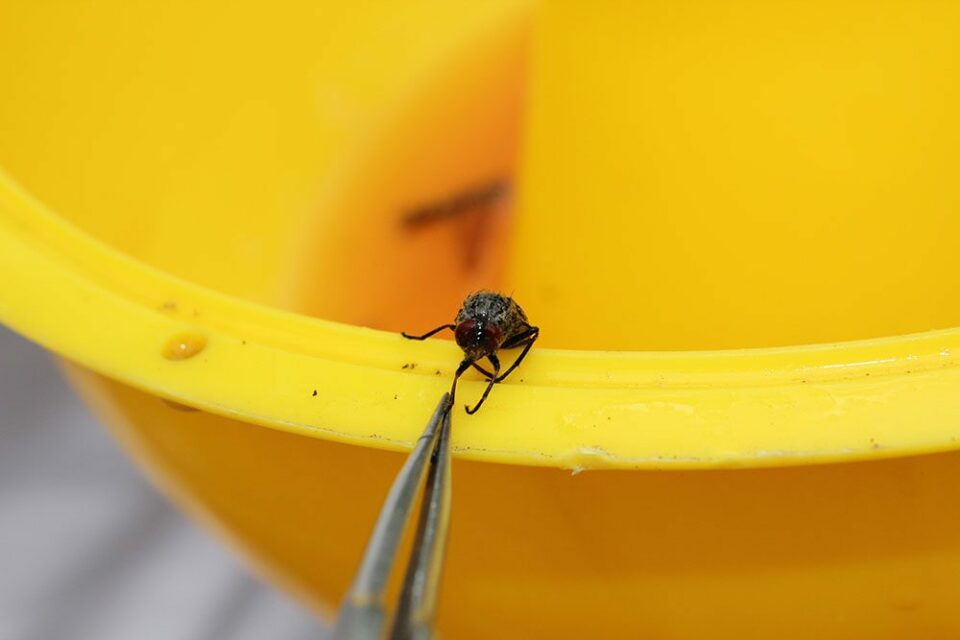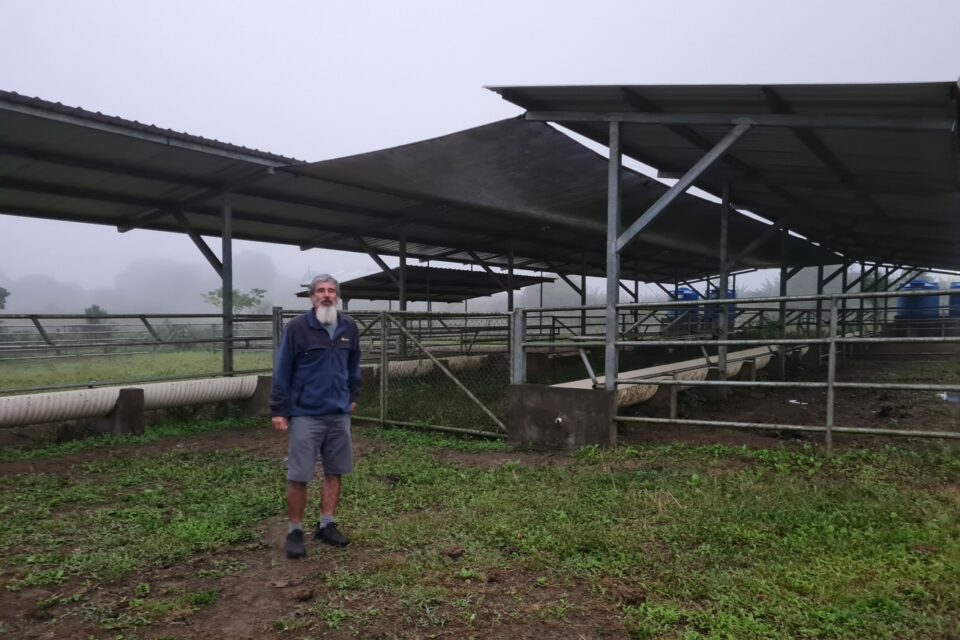

Researching avian blood parasites
Monitoring the introduction of parasites to Galapagos is vital if we are protect the Archipelago's unique bird species.
On San Cristobal’s northwestern tip is a tranquil cove nestled below the towering hillside, Cerro Tijeretas.
In the evenings, magnificent and great frigatebirds soar in graceful circles overhead, riding the thermals in search of roosts. Boisterous clatter can be heard from the smaller songbirds; mockingbirds, finches and flycatchers cram in a final forage as the light fades. At this sheltered inlet, approximately 184 years ago, a young naturalist by the name of Charles Darwin took his first steps upon Galapagos. On returning to HMS Beagle after his first foray onshore, Darwin jotted in his diary, “The birds are strangers to man and think him as innocent as their countrymen the huge tortoises…”. This extraordinary fact about the nature of Galapagos holds true even today. Animals there have evolved in relative isolation, allowing a degree of naiveté to all things foreign. However, year on year, travel to the islands booms. This has been a great success story for nature tourism in Ecuador, but for the otherwise isolated species which call these Islands home, the increased integration of Galapagos in our global travel networks, also brings new threats.

Islands, like those in the Galapagos Archipelago, have often evolved a unique stability of species, adapted over millennia through their interactions. Sudden introductions of alien organisms, transported as stowaways on planes and boats, can disrupt this stability and have dire consequences for the unique island inhabitants. Over the past 30 years the rate of species introductions has greatly increased. Invasive parasites are a particularly serious threat and the diseases they cause can quickly spread through previously unexposed populations. For birds, avian malaria stands out as an important concern. As in humans, this disease is caused by a protist parasite spread by mosquitoes. Where it’s been introduced, such as in Hawaii, it’s contributed to rapid population declines and the extinction of tens of unique honeycreeper species. By contrast, Galapagos has clung onto its diversity of endemics, with no bird species yet recorded as lost. But this has been largely due to serendipity and to avoid a similar fate befalling the birds of Galapagos it’s important that we get to grips with the threats they now face, and to monitor similar parasite introductions.
Researching these parasites in Galapagos is an ongoing priority. For the past two years we’ve been contributing to this effort by studying the birds of San Cristobal. These days the island is an important gateway to the Archipelago, with a central airport acting as a conduit to the continental mainland.
“Sudden introductions of alien organisms can have dire
consequences for the unique island inhabitants”

It also hosts an introduced population of the southern house mosquito Culex quinquefasciatus, a key species capable of spreading malarial blood parasites. These are two significant risk factors when it comes to the introduction and spread of new diseases. Despite this, and quite by chance, San Cristobal is the least surveyed of the major islands for blood parasites and disease – something we hope to remedy. By catching small land birds at a variety of locations across the island we can survey for parasite presence in multiple species and across various habitats. All Galapagos’ bird populations are considered at risk, from the iconic Darwin’s finch species to the vibrant yellow warblers.
From small blood samples we use microscopy and modern molecular detection methods to identify infections. We can also classify the species of blood parasite and whether it is successfully developing, information that helps distinguish newly introduced parasites and infection hotspots. With this added insight and ongoing research informing future monitoring and conservation priorities, we can remain hopeful; there’s still time to avoid irreversible loss in the natural wonder of Galapagos.
This blog was adapted from an article in our 2019 Autumn Winter Galapagos Matters members magazine.
If you’d like to become a member of Galapagos Conservation Trust from as little as £3 per month, head to our Membership page.
Related articles


How do we solve the problem of invasive species in Galapagos?

Restoring Floreana: A local perspective


